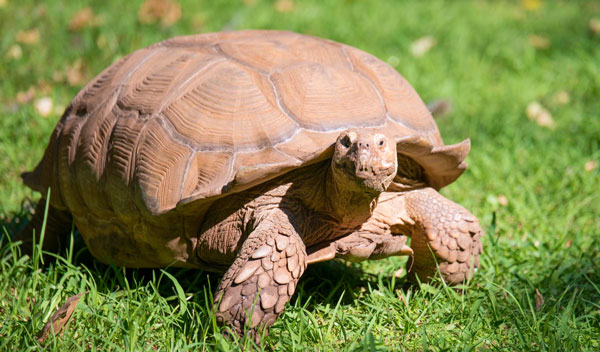What Do Tortoises Eat: A Comprehensive Dietary Guide
Tortoises are fascinating creatures with diverse dietary needs depending on their environment and breed. If you’re a tortoise owner or simply curious about these gentle reptiles, you might wonder, What do tortoises eat to stay healthy and thrive? This article dives into the natural diet of tortoises in the wild, explores the specific dietary needs of different breeds, and provides clear guidelines on what you can feed your pet tortoise. Read on to discover everything you need to know to keep your tortoise happy and healthy.

What Do Tortoises Eat in the Wild?
In the wild, tortoises have a varied diet that changes with their environment. Most wild tortoises are herbivores, but some species have been known to consume small amounts of animal matter. Their diet primarily consists of:
Grasses: Tortoises consume various types of grasses, which provide essential fibers and nutrients.
Leafy Plants: They are fond of leaves from plants such as dandelions, thistles, and clover.
Flowers: Flowers are another common component, offering a mix of nutrients and natural sugars.
Cacti: In arid environments, some species feed on cacti and other succulent plants, which help them stay hydrated.
Fruits: Some wild tortoises eat fruits that have fallen from trees, but this tends to be less common.
Wild tortoises forage for food and spend a significant amount of time grazing. Their diet choices are influenced by the availability of vegetation and the season of the year.
Different Breeds of Tortoises
Different breeds and species of tortoises have distinct dietary preferences and requirements. Understanding these differences is essential for proper care.
Sulcata Tortoise: Also known as the African Spurred Tortoise, this breed requires a diet high in fiber. They eat grasses, hay, and leafy greens.
Russian Tortoise: This species thrives on a varied diet, including dandelions, kale, and parsley. Occasional treats of fruits are acceptable.
Red-Footed Tortoise: Native to South America, they enjoy a diet of leafy greens, fruits, and occasional protein in the form of insects.
Greek Tortoise: This breed subsists mainly on leafy greens and flowers. They are especially fond of hibiscus and other edible flowers.
Leopard Tortoise: They need a diet similar to that of the Sulcata Tortoise, focusing on grasses, and weeds, with minimal fruits.
Knowing the specific dietary needs of your tortoise breed can help in preparing a diet that ensures good health and longevity.
What Can Tortoises Eat?
Feeding your pet tortoise a balanced diet is crucial for its well-being. Here are some safe and nutritious options:

Leafy Greens: Include kale, romaine lettuce, and collard greens. These provide essential vitamins and minerals.
Vegetables: Offer safe vegetables such as carrots, bell peppers, and squash in moderation.
Fruits: Limited quantities of fruits like apples, strawberries, and melon can be given as treats.
Flowers: Edible flowers such as hibiscus and nasturtium (moderately) can be added for variety.
Herbs: Fresh herbs like parsley and mint can also be included in their diet for added flavor.
Always ensure that the foods are free from pesticides and washed thoroughly before feeding them to your tortoise.
How Often to Feed Tortoises?
The feeding frequency for tortoises varies depending on their age, size, and breed. As a general guideline:
Adult Tortoises: Feed them every day or every other day. Make sure their meals are portion-controlled to avoid obesity.
Juvenile Tortoises: Young tortoises require more frequent feeding, usually every day, to support their growth and development.
Hatchlings: Feed hatchlings daily, focusing on nutrient-rich and easy-to-digest foods.
Monitor your tortoise’s health and adjust its feeding schedule as necessary. Overfeeding can lead to obesity and other health issues, while underfeeding can result in malnutrition.
Foods to Avoid for Tortoises
Certain foods can be harmful or even toxic to tortoises. It’s important to know which items to avoid:
Dairy Products: Tortoises are lactose intolerant and cannot digest dairy.
Meats: Avoid feeding any kind of meat, as most tortoise species are herbivores.
Toxic Plants: Common toxic plants include azaleas, rhododendrons, and buttercups. Ensure none are within your tortoise’s reach.
Processed Foods: Chips, bread, and other processed foods are unhealthy and should never be given to tortoises.
Citrus Fruits: Oranges, lemons, and other citrus fruits can cause digestive issues.
Being aware of these harmful foods helps in keeping your tortoise healthy and safe.
Conclusion
Understanding the dietary needs of tortoises is key to their health and longevity. From their diet in the wild to the specific requirements of different breeds, it’s crucial to provide balanced and nutritious food. Remember always to avoid harmful foods and monitor their feeding routine. A well-fed tortoise is a happy and healthy pet.
FAQs
Can tortoises eat fruit?
Yes, but in moderation. Fruits like apples, strawberries, and melon can be given occasionally as treats. Avoid citrus fruits, which can cause digestive issues.
How much can a tortoise eat?
The amount varies by age and size. Adults can be fed daily or every other day, while juveniles and hatchlings generally require daily feeding. Always portion control to avoid obesity.
What is poisonous to tortoises?
Several common plants, including azaleas, rhododendrons, and buttercups, are toxic to tortoises. Avoid feeding them meat, dairy, and processed foods as well.
